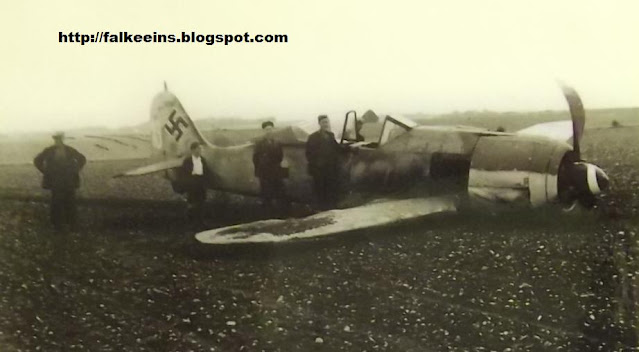Johannes Kuhn was born in Amsterdam on 15 November 1908. He served in the Militaire Luchtvaart (Dutch air force) from 1932, and in 1937 volunteered for a six-year term with the Dutch Indies air force, which he joined on 14 August 1937. However, due to an illness, doctors pronounced him unfit for service in the tropics in 1938, and Kuhn had to return to the Netherlands. From April 1939 onwards he flew with 1-2 LvR (1st Reconnaissance Group of the 2nd Air Regiment/ Army Aviation). At the end of that year Kuhn was transferred to V-2 LvR (Army Aviation Fighter Group) and retrained as a fighter pilot. He was shot down over the Pijnacker area on the first day of the German western campaign, on 10 May 1940. Kuhn saved himself by parachute, but owing to a bad knee injury had to spend several months in hospital. His wound did not heal until 1942, and on 15 October of that year he was officially discharged from the Dutch military service. On the same day he volunteered for the German Luftwaffe. Kuhn was later to declare that his German wife had talked him into joining the Luftwaffe, probably a 'protective' statement given to veil his real motives. In any case, until April 1943, he underwent training with the Flieger-Ausbildungsregiment 63 (Pre-Flight Training Regiment) at Toul, and passed the Flugzeugführerüberprüfungsschule (Pilot Re-Examination School) at Prenzlau, graduating in early July.
From 2 July 1943 Kuhn was with Schlachtgeschwader 101, a close-support training formation, flying the Hs 129 armoured assault aircraft from Paris-Orly. In February 1944 he was assigned to the Flugzeugführerüberprüfungsschule at Quedlinburg, and in May was posted to his last unit, 3./Uberfiihrungsgruppe West (3rd Squadron of Ferry Group West). The pilots of this unit, consisting of four Staffeln and a Stab, were engaged in ferrying aircraft from industrial establishments and assembly plants to the various front-line units. After the Allied invasion of France the losses of Ferry Group West rose dramatically, the pilots having to fly in all weather conditions and their aircraft often being damaged while touching down on improvised airstrips.
By then Kuhn had realized that the war was lost for the Reich and decided to defect. A favourable opportunity came on 30 August, when 14 Fw 190s had to be ferried to JG 26 at Brussels-Melsbroek. Kuhn took off from Wiesbaden, and, as the weather was poor, managed to disengage from the others without being noticed. His course now led over Ostend and the English Channel in low-Ievel flight straight to southern England. Kuhn avoided landing on an RAF airfield, where he would have risked being shot down by anti-aircraft fire. Instead he made a perfect belly landing in a field near Monkton road farm, close to Manston in Kent. His Fw 190A-8, WNr. 171747 was only slightly damaged and later put on display at the Farnborough exhibition of captured German equipment prior to being scrapped.

